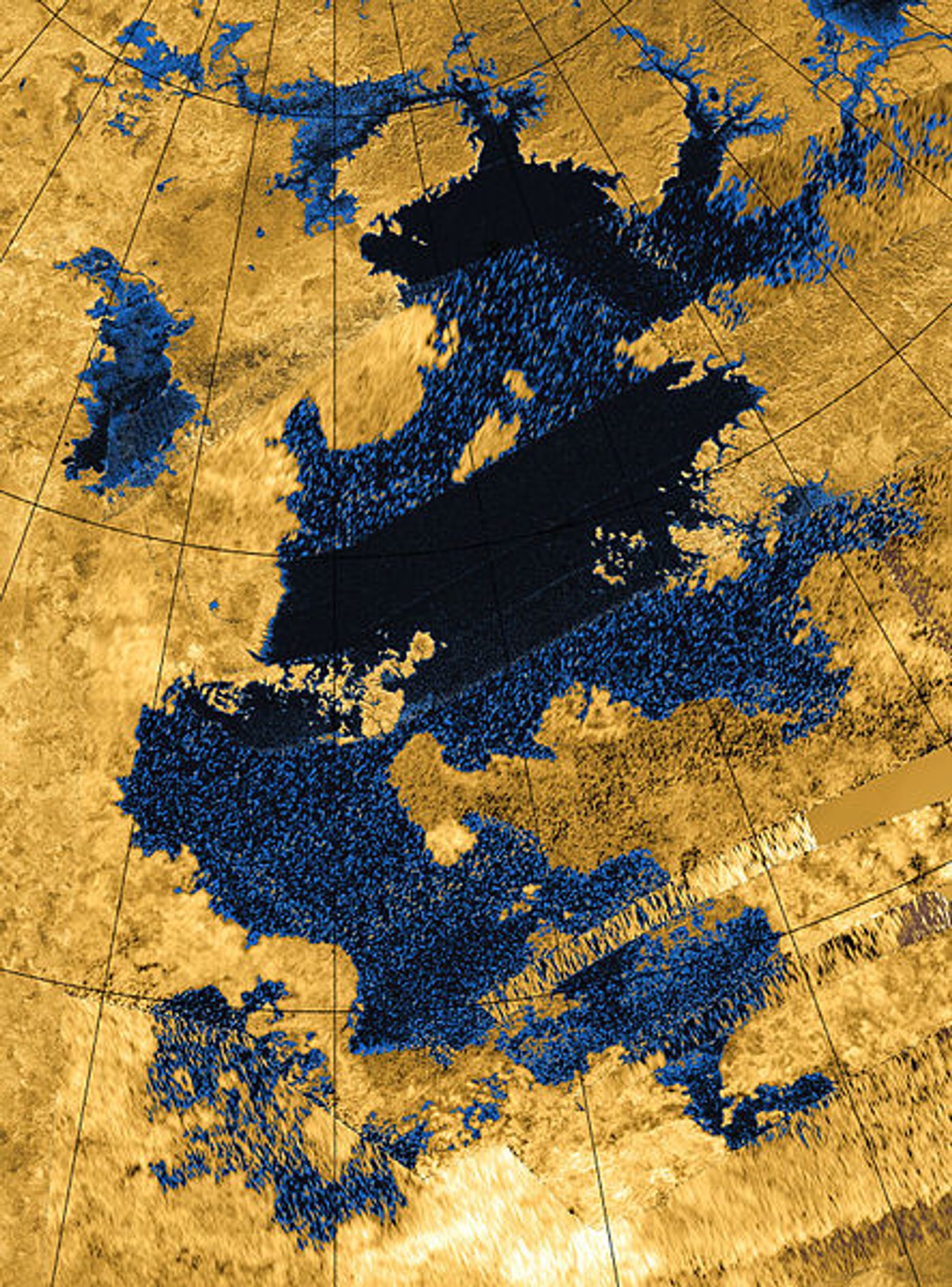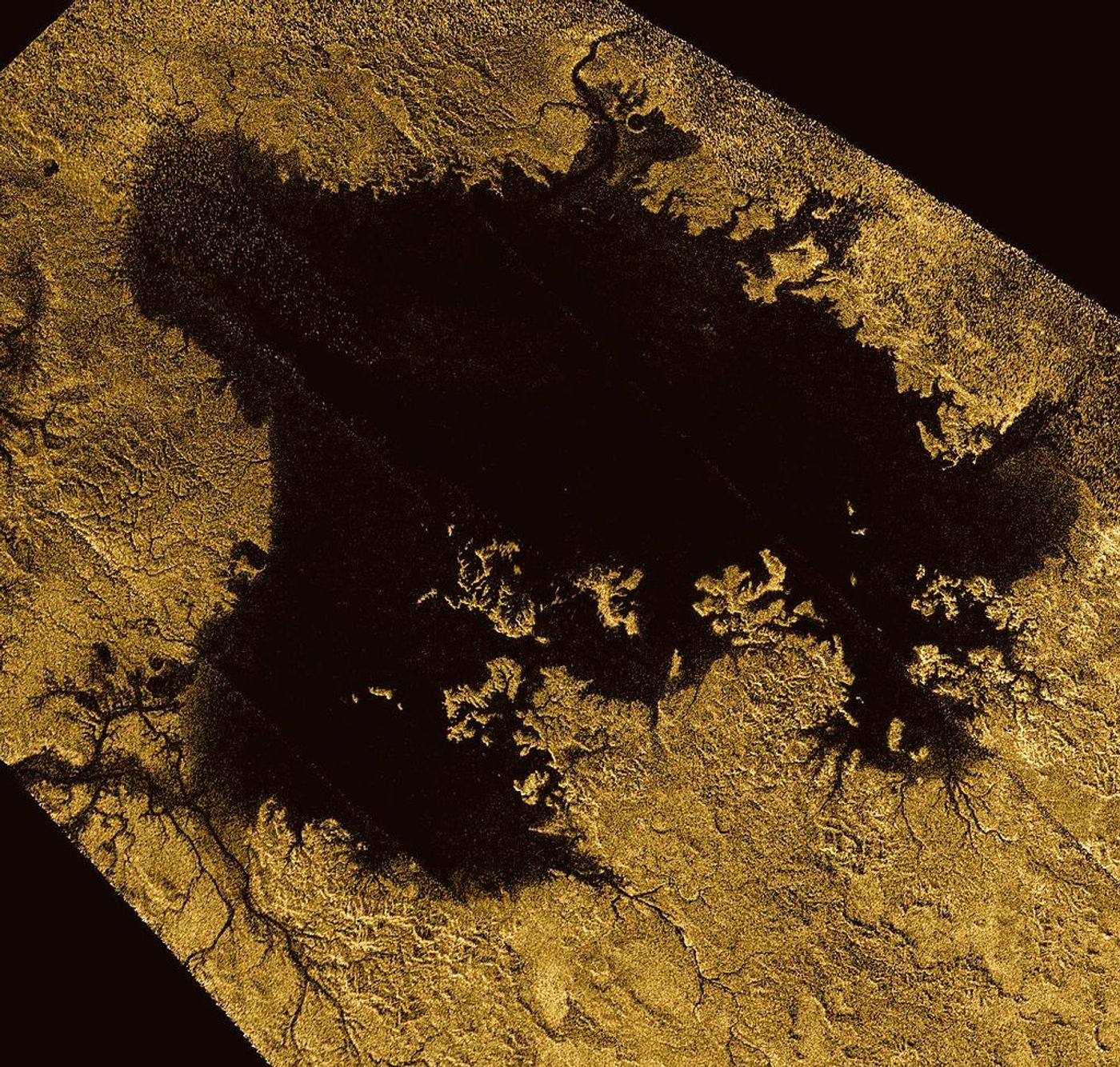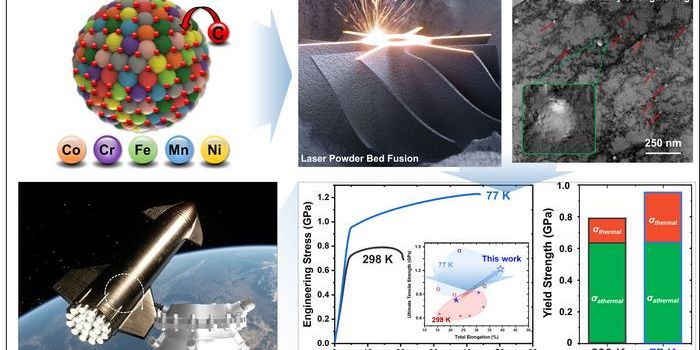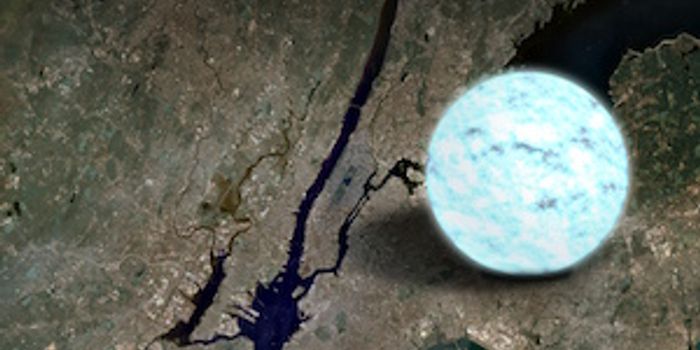Solar System Wonders: Titan's Seas
Infrared image from NASA'S Cassini spacecraft showing sunlight reflecting off a body of liquid in the northern hemisphere of Titan. (Credit: NASA/JPL/University of Arizona/DLR)
We previously explored Saturn's largest moon, Titan, but now we'll take a more up-close examination of this mysterious moon. While Earth is credited with having its vast oceans teeming with life, it’s not the only location in the solar system with bodies of liquid on its surface. This credit is bestowed on Saturn’s largest moon, Titan, but instead of liquid water, these bodies are filled with liquid methane and ethane. What makes this even more extraordinary is both of these substances are gasses on Earth, but are in liquid form at extremely low temperatures, meaning Titan has to be extra cold for these liquid bodies to exist, approximately minus 292 degrees Fahrenheit (minus 180 degrees Celsius).
Due to Titan's thick atmosphere, its vast lakes and seas went unobserved until the 2000s when scientists got a treasure trove of data about Titan thanks to NASA’s Cassini spacecraft, which completed more than 100 flybys of Saturn’s largest moon, and even delivered the Huygens probe to the moon’s surface, which survived for approximately 90 minutes before its batteries were drained. The probe imaged rounded pebbles similar to those found on Earth that were shaped by liquid water, and Cassini’s powerful instruments were able to penetrate Titan’s thick atmosphere, revealing the many lakes and seas of liquid methane and ethane on its surface.
Near-infrared composite image of Titan showing its many lakes and seas of methane and ethane. (Credit: NASA)
Contrast-enhanced image of Titan's surface taken by the Huygens probe. (Credit: ESA/NASA/JPL/University of Arizona; processed by Andrey Pivovarov)
The currently hypothesized largest sea on Titan is Kraken Mare, which encompasses approximately 150,000 square miles (400,000 square kilometers) and resides in the northern polar region of Titan. A 2020 study estimated that Kraken Mare could be at least 1000 feet (300 meters) deep, and also hypothesized that Kraken could contain more ethane than methane, as well.
Radar image of Kraken Mare taken by NASA's Cassini spacecraft. (Credit: NASA / JPL-Caltech / Agenzia Spaziale Italiana / USGS)
The second-largest sea on Titan is Ligeia Mare, which encompasses approximately 50,000 square miles (130,000 square kilometers), and also resides in the northern polar region of Titan with scientists hypothesizing that it is comprised predominantly of methane. Along with these massive seas, Titan is also home to a myriad of hydrocarbon lakes, as well.
Radar image of Ligeia Mare taken by NASA's Cassini spacecraft. (Credit: NASA/JPL-Caltech/ASI/Cornell)
With the end of Cassini’s mission in 2017, there are currently no spacecraft exploring Saturn or any of its moons. However, NASA’s Dragonfly mission will be launching to Titan in 2026 and arrive in 2034. Dragonfly consists of a quadcopter who will “hop” around the small moon and explore its potential habitability.
What secrets will Dragonfly reveal about Titan and its liquid bodies of methane and ethane? Only time will tell, and this is why we science!
Sources: Labroots, NASA, NASA (1), Space.com, Cornell News, NASA (2), NASA (3)
As always, keep doing science & keep looking up!













